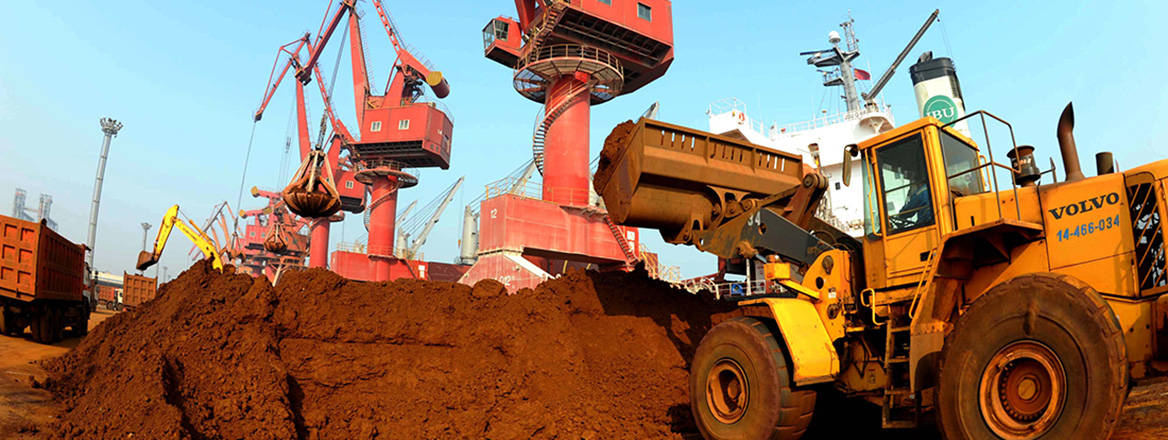As countries around the world struggle to reduce China’s dominance of critical mineral supply chains, they would do well to learn from Japan’s successes and mistakes in tackling this challenge.
Japan encountered problems with overreliance on Chinese mineral supply chains over a decade ago, long before it became a critical issue for other countries. Following a territorial dispute in 2010, China implemented an export ban on rare earth elements (REEs) that specifically targeted Japan. This ban only lasted two months, but encouraged Japan to change its approach for key mineral-dependent industries and supply chains.
As China’s export controls on minerals needed for the green energy transition become more indiscriminate – exemplified by last year’s graphite restrictions – other countries can learn from Japan’s experience. Groups like the Mineral Security Partnership (MSP) have prioritised alternative producers and processors, but there is also value in stockpiling. This approach could be particularly effective because China's relative economic weakness means that it is unlikely to be willing or able to sustain onerous or lengthy export controls.
The bottom line is that, despite all its efforts, Japan still gets more than half its REEs from China and remains heavily reliant on Chinese processing for other raw materials. Urgent action is required to reduce concentration risks, but China will nonetheless remain an important part of mineral supply chains for the foreseeable future. It should also be underlined that China is set to play a leading role in attempts to push forward recycling and technologies that reduce material reliance. Ongoing engagement with China is therefore imperative.
Key Lessons
This article sets out to profile four of Japan’s high-level responses to the REE export ban in 2010. Some of these responses, particularly stockpiling and diversification, could be mimicked easily by other countries. Importantly, these strategies are even more effective when adopted by alliances like the MSP.
1. Investing in alternative producers and processors: Japanese companies and investors have been instrumental in the emergence of Lynas, an Australia-based REE producer and processor. Similarly, they have supported the emergence of Malaysia as a major processor of REEs. They have also encouraged allies like the US to promote domestic REE production, such as at the Mount Pass facility. This initiative has enjoyed government-level support, but at a local level met opposition to mining operations that are seen as dirty and destructive in the US and developed democracies.
Urgent action is required to reduce concentration risks, but China will nonetheless remain an important part of mineral supply chains for the foreseeable future
Japan empowered the Japan Organization for Metals and Energy Security to act as a one-stop shop that coordinates the country’s minerals strategy. This has been instrumental in its diversification success, which has helped to reduce the proportion of the world’s REE mining that takes place in China from 95% to 60%.
However, China still accounts for nearly 90% of REE processing, underlining the limitations of the strategy and the importance of a holistic approach to supply chain resilience.
2. Stockpiling: Japan immediately started to stockpile REEs in 2010/11, and its experience underlines the need for consideration and coordination: Japanese companies were in such a rush to stockpile REEs both during and after China’s embargo that they exacerbated a price bubble that lasted for over a year.
Nonetheless, stockpiling can offer a good way to manage price spikes and resource scarcity (e.g. in the oil and gas markets). China has demonstrated its own capacity to stockpile critical minerals while prices are low. More recently, several countries have started to stockpile graphite and other critical minerals following China’s controls. Examples include the US’s National Defense Stockpile of various metals and South Korea’s expanded critical mineral stockpile. The UK is considering a strategic stockpile, and France is set to conduct a stockpile of mineral resources located domestically and in its overseas territories.
Stockpiling is most effective as a response to relatively short or limited trade disputes or supply chain disruptions. This is important because China’s economic fragility suggests that it may be unable to sustain trade disputes that have significant impacts on its core industries, including minerals and electric vehicles (EVs). So far, China’s controls on gallium and graphite have been closer to a skirmish than committed economic warfare.
Stockpiling would be more powerful still if groups like the MSP could work on shared stockpiles. This approach would also help to mitigate the risks to transition mineral supply chains outside China and/or those driven by external forces (such as climate impacts). It is therefore unfortunate that the EU appears to be walking back its plans to establish such stockpiles.
3. Promoting technology alternatives that reduce material reliance: Japan has attempted to develop technologies that use fewer REEs or alternative materials. It has also been more hesitant than the EU and US to increase reliance on Chinese supply chains for products like EVs.
In part for this reason, Japanese automakers have shown greater support than their counterparts for technologies like hydrogen. This has put them in a weak competitive position given the growing dominance of EVs and has left a gap for Chinese automakers to fill, particularly in servicing regional demand. Japan’s approach has therefore increased China’s control over EV supply chains.
It is possible that this strategy would be more successful in collaboration with other countries. For example, replacing graphite with other anode materials (such as silicon, tin and lithium) or developing new battery technologies (such as solid state) will take time but is achievable in the next few years, particularly with concerted effort. But material substitution would take place faster if this concerted effort included China.
4. Supporting recycling: Japan has accelerated the development of technologies for recycling REEs and other key materials, but reuse is still very limited outside base metals like copper, nickel and steel. Recycling of REEs, for example, is unlikely to be commercialised until the 2030s.
Engaging with China is just as important as reducing reliance on it, and the two approaches should not be mutually exclusive
Other transition materials like lithium, cobalt and manganese face several significant barriers to recycling at scale, including technology shifts (such as in battery chemistry), price uncertainty for virgin material, lack of standardisation in battery design/construction processes, and lack of available feedstock at scale.
So, recycling can reduce reliance on China in the medium term (that is, post-2030) but not the short term. Again, China is currently leading the way with much of this technological development. Expanding recycling at the rate needed by global markets and standards will likely mean learning from China. This argues for greater engagement as well as concentration risk management.
What Next
The concentration of transition mineral supply chains in China creates substantial risks for other economies and their green transitions. China can weaponise its control of these supply chains, but is unlikely to do so unprovoked. Engaging with China is therefore just as important as reducing reliance on it, and the two approaches should not be mutually exclusive.
Japan’s experience can help other countries to get the balance right, but as ever, the devil is in the detail. Stockpiling is a particularly effective response given the nature of the risk posed by China’s dominance and in the context of its weak economy. As with other approaches, stockpiling is more effective when countries collaborate. But this should be framed to manage supply chain risks in general, rather than as a way of combatting Chinese control of transition minerals.
The views expressed in this Commentary are the author’s, and do not represent those of RUSI or any other institution.
Have an idea for a Commentary you’d like to write for us? Send a short pitch to commentaries@rusi.org and we’ll get back to you if it fits into our research interests. Full guidelines for contributors can be found here.
WRITTEN BY
Ben Bowie
RUSI Associate Fellow, Cyber and Tech
- Jim McLeanMedia Relations Manager+44 (0)7917 373 069JimMc@rusi.org



